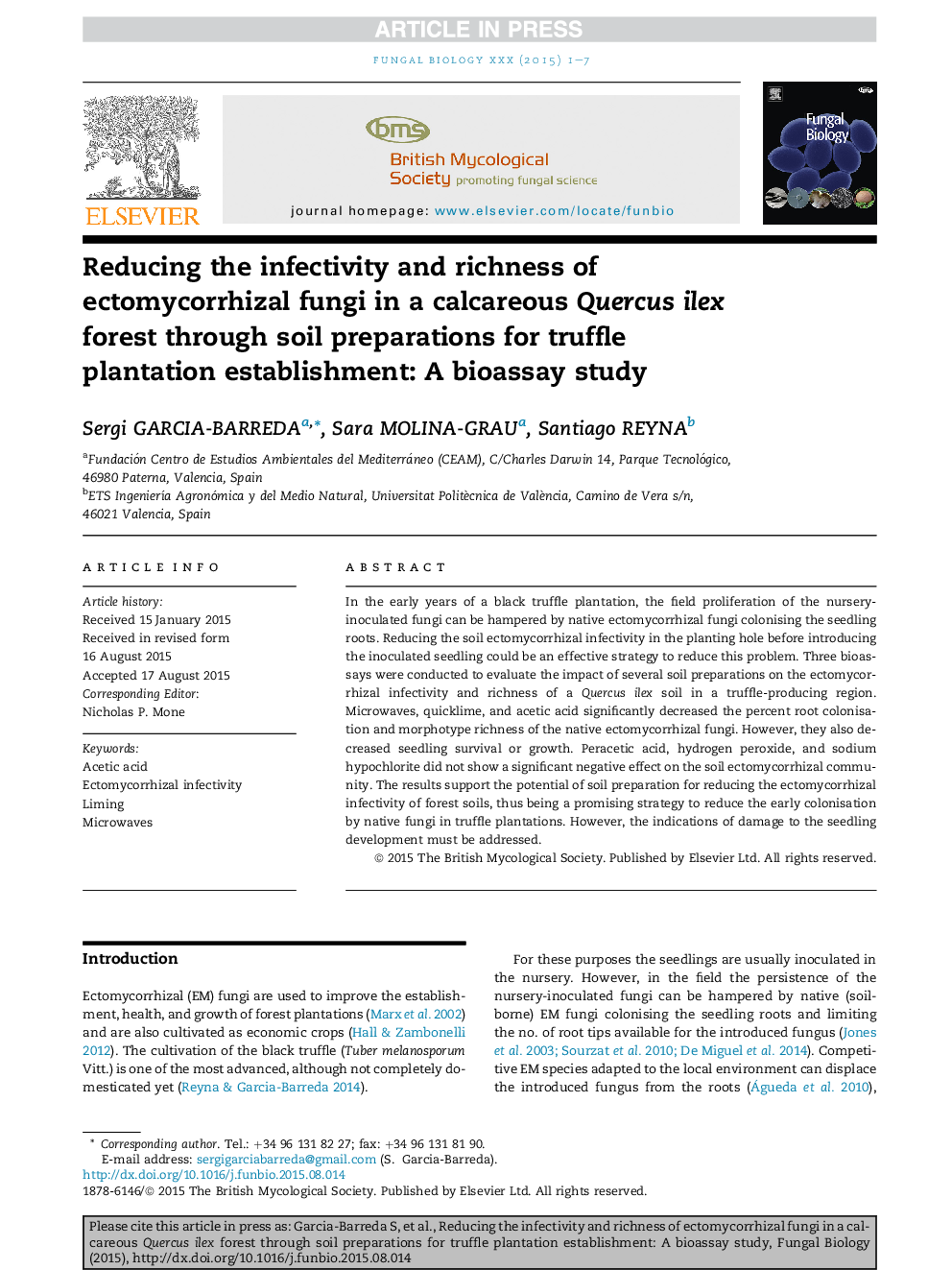| Article ID | Journal | Published Year | Pages | File Type |
|---|---|---|---|---|
| 6287856 | Fungal Biology | 2015 | 7 Pages |
Abstract
In the early years of a black truffle plantation, the field proliferation of the nursery-inoculated fungi can be hampered by native ectomycorrhizal fungi colonising the seedling roots. Reducing the soil ectomycorrhizal infectivity in the planting hole before introducing the inoculated seedling could be an effective strategy to reduce this problem. Three bioassays were conducted to evaluate the impact of several soil preparations on the ectomycorrhizal infectivity and richness of a Quercus ilex soil in a truffle-producing region. Microwaves, quicklime, and acetic acid significantly decreased the percent root colonisation and morphotype richness of the native ectomycorrhizal fungi. However, they also decreased seedling survival or growth. Peracetic acid, hydrogen peroxide, and sodium hypochlorite did not show a significant negative effect on the soil ectomycorrhizal community. The results support the potential of soil preparation for reducing the ectomycorrhizal infectivity of forest soils, thus being a promising strategy to reduce the early colonisation by native fungi in truffle plantations. However, the indications of damage to the seedling development must be addressed.
Keywords
Related Topics
Life Sciences
Agricultural and Biological Sciences
Agricultural and Biological Sciences (General)
Authors
Sergi Garcia-Barreda, Sara Molina-Grau, Santiago Reyna,
